#storyinspirations
Explore tagged Tumblr posts
Text
Just putting this here, because everything is about them
youtube
#amwriting#ofmd#thisdaywewrite#shoveitintotheluckhole#our flag means death#romance#storyinspirations#blue rodeo#gentlebeard#Youtube
0 notes
Text

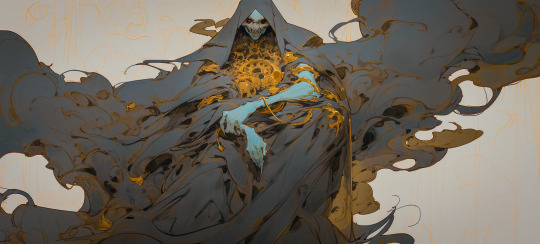
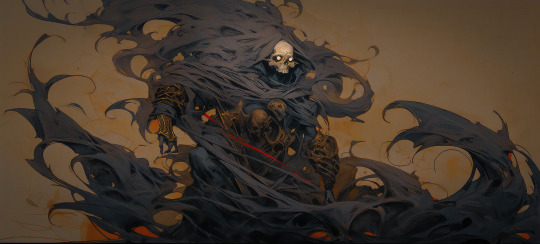
"The Spectral Sisterhood"
In the heart of the Neverlands, a domain teetering between the tangible and the spectral, roamed three ethereal entities known as the Triptych of Fated Femininity. Eternally bound to the world of the living, they manifested as wraiths, each with a poignant story of their mortal plight.
First was Tenebris, once a fearsome pirate queen. Known far and wide, she commanded her ship through treacherous waters with a temerity unmatched. It was her insatiable greed, however, that eventually led her to a cold, watery grave. Bound by her past, she drifted as a wraith, the essence of her audacious life echoing in her ethereal form.
The next was Vivara, a sorceress of unmatched beauty and allure. Consumed by vanity, she fell prey to her own magic in a quest for eternal youth. Trapped in her spectral form, she roamed the Neverlands, her tragic tale echoing the spell she had spun and the beauty she had desperately sought to retain.
Finally, there was Ossium, a queen who stood fearless in the face of war. With her kingdom at stake, she fought with unyielding spirit but was tragically slain in battle. Her spectral form lingered, a symbol of the realm she fought so valiantly to protect and the sovereignty she tragically lost.
Together, these three wraiths roamed the Neverlands. Their mortal tales were etched into their very beings, their shared feminine strength tying them together. Bound to wander in eternal restlessness, they remained forever lost between life and death.
#wraith#midjourney#AIArt#DigitalArt#FantasyArt#SpectralCreatures#StorytellingArt#VisualNarrative#ConceptArt#GhostStories#FantasyIllustration#CreativeWriting#StoryInspiration#ArtisticShare#EtherealBeauty#DarkFantasy#MagicRealism#ArtCommunity#ShortStory#ArtStationHQ#DigitalIllustration#CreativeMinds#ArtistsOnInstagram#GhostArt#CharacterDesign#ArtisticExpression#VisualStorytelling#DigitalPainting#FantasyCreatures#DeviantArtGallery
3 notes
·
View notes
Text
Story Starter 2#
Free inspiration
"I'll have a root beer, and ... whatever he's having."
"Ok, sure. Hey what's with the long face? Sure don't look very clowney."
"Are ya sure you want to know? It's a rather long tale and I don't want to bore you."
"Sure I'm sure. This is a listener's job. Whats up?"
"So umm i'm in this band, or well, I guess I was. It's called Normal Clown Possession, usually referred to as NCP. You know the band that gives the deceased a chance to communicate with the living. And the occasional demon too. Well, anyways I also have a shit brother. Let's call him Gerald.
1 note
·
View note
Text
Reblogging because I wanted to pin the one with the bittle of wine but pinterest won't pick it up...






Taika + laughing (part two)
[part one] , [more gifs]
#taika waititi#darkinerry#darkinerrygifs#storyinspirations#amwriting#edward teach#blackbeard#laughing#ofmd#our flag means death
174 notes
·
View notes
Text
Analysis of the "Star Trek" writers bible for the original series by Gene Roddenberry (3rd Revision / April 17, 1967)
PDF-Download: https://www.bu.edu/clarion/guides/Star_Trek_Writers_Guide.pdf
Here is a summary of the key points discussed in bullet points:
The document's guidelines lend themselves well to allegorical storytelling through nuanced socio-political metaphors.
The document provides extensive guidelines for Star Trek storytelling across world-building, characters, technology, formats, and social commentary.
It emphasizes internal consistency, grounded extrapolation from science, and prioritizing emotional drama/character arcs over flashy plots or exposition.
Melodramatic devices were deemed less suitable due to preference for layered dramatic complexity versus climactic extremity.
The depicted United Earth/Starfleet culture is progressive yet balanced, representing diversity and international cooperation under exploration.
Characters are expected to behave rationally and develop believably through challenges aligning with their backgrounds and skills.
Settings include the familiar Enterprise along with diverse yet practical colony worlds and bases focusing on what's essential to stories.
Settings like the Enterprise are constructed to immerse audiences in a richly detailed yet practical imagined universe.
By weaving thoughtful messages into character-driven narratives, the show aims to both entertain and inspire audiences with optimistic visions of humanity.
Producers and writers ideally have scientific literacy, multi-disciplinary creativity, collaborative instincts, and experience managing serialized formats.
Evaluations found the document effectively conceptualizes principles for constructing consistently progressive yet rigorously grounded science fiction storytelling.
Here is a summary of the key points from the Star Trek Writers' Guide in bullet points:
The U.S.S. Enterprise is a starship that serves as a "home base" for the crew to explore space. It carries about 430 crew members, one-third of which are female.
The main characters are Captain Kirk, Commander Spock, and Dr. McCoy. Other regular characters include Sulu, Scotty, Uhura, and Nurse Chapel.
Stories take place aboard the Enterprise as it patrols its sector of the galaxy, assisting colonies and engaging in exploration, diplomacy, etc.
The format emphasizes characters over science/technology. Stories should be grounded first in character and emotion.
Maintain internal logic and consistency. Translate scenes into realistic equivalents to maintain believability.
Focus on people, not explanations of gadgets. Keep a brisk pace without long exchanges.
Make logical projections of future technology but avoid fantasy elements. Stay grounded in science fact or theory.
Limit new sets to only what's essential for the story. Redress existing sets when possible.
Main equipment includes tricorders, phasers, transporters, sensors, deflectors, tractor beams, and the ship's computer.
Provide context through the captain's log voiceovers but keep them concise.
Stories can take place aboard the Enterprise or on planet surfaces but focus on "Class M" planets similar to Earth.
Maintain internal consistency with terminology, measurements, star dates, and other world-building elements.
Here is an evaluation of the guidelines presented in the Star Trek Writers' Guide document:
Specificity - The document provides an extremely high level of specific detail about the Star Trek universe, characters, technology, formats, etc. This level of specificity supports highly consistent world-building.
Practical Focus - The guidelines prioritize what is pragmatic for episodic television storytelling - keeping episodes self-contained, focused on characters/emotions rather than exposition, and consideration of production needs.
Grounding in Realism - Concepts are expected to have scientific/logical rationale and characters/events are tested against real-world analogs to ensure plausibility and suspensions of disbelief are not broken.
Internal Consistency - Maintaining coherence across narrative and conceptual elements is clearly a top priority, as it strengthens immersion into this speculative future world.
Emphasis on Believability - From rationale for technology to motivations for characters, believability is the prime evaluation metric. This helps stories engage rather than distance audiences.
Support for Writers - Detailed advice, clarification requests, technical resources are offered to aid authors crafting stories for this universe. This enhances quality and consistency.
Room for Creativity - Flexibility is still permitted based on story needs, and concept details are considered secondary to emotional arcs and drama. Ideas are not stifled.
The guidelines set an excellent foundation for the Star Trek world's richness while prioritizing the storytelling and audience experience - a balancing act that likely contributed greatly to its success.
Here is an evaluation of the ethics presented in the document:
Inclusiveness - It promotes diversity and international collaboration, reflecting ethical values of equality and respect for all people.
Optimism - Depicting a hopeful vision of humanity's future can help motivate audiences to work towards ethical progress.
Social progress - By subtly supporting issues like diversity, it encourages ethical social change without being preachy.
Nuance - Presenting cultures and dilemmas with cultural sensitivity accounts for ethical complexity rather than simple answers.
Rationality - Emphasizing logical decision making and restraint promotes level-headed, principle-based approaches to ethics.
Humanism - Its focus on believable characters prioritizes portraying people with nuance, avoiding stereotypes.
Consistency - Requiring internal logic maintains standards of intellectual honesty and prevents contradictory messaging.
Aspiration - Aiming to both entertain and inspire points to an ethics of elevating audiences rather than mere diversion.
Science-focus - Basing speculation in evidence encourages respect for facts and discounting of pseudoscience.
Overall, by constructing a cohesive, thoughtful, restrained yet progressively-minded framework it models an ethical approach to sci-fi storytelling focused on human dignity, social progress, rational discourse and uplifting audiences.
Here is an evaluation of how well the document understands principles for the science fiction medium:
Grounded extrapolation - A core principle of utilizing current science to plausibly speculate on future technologies/societies. The document emphasizes this approach.
Internal consistency - Maintaining logically consistent rules and implications within an imagined world is important for immersion. The guidelines prioritize consistency.
Socio-political commentary - SF can subtly comment on current issues to promote reflection without heavy-handedness. The document supports this tactic.
Believable human characters - Relatable human characters are still needed amid speculation to form emotional connections. Guidelines focus on characterization.
Character-driven stories - Conflicts arise from within characters rather than external events alone. Stories should be driven by character decisions.
Optimistic vs. dystopian - Both inspire but optimism can counterbalance real-world issues. Star Trek's hopeful vision follows this principle.
World as protagonist - Detailed settings become characters in their own right. Immersive world-building elevates the experience.
The document demonstrates a nuanced appreciation for how science fiction can artfully balance entertainment and thought-provoking substantive reflection through subtle, humanistic approaches aligned with SF's creative potentials and responsibilities.
Here is a summary of the key points about the story format from the document:
Stories should be built around an action-adventure framework to entertain a mass television audience.
Focus is on the characters, not science/technology. Stories are about people, not explanations of gadgets.
Teasers open with action/jeopardy to grab viewers. Backstory is saved for the captain's log in Act 1.
Four acts, with a strong Act 2 cliffhanger. Pacing is brisk without long philosophical talks.
Captain's log provides contextual VO summaries, usually to open Act 1 in a crisp, factual manner.
Remain grounded without fantasy elements. Base speculative concepts in established science/theory.
Stories take place aboard the Enterprise or planetary landscapes, focusing on "Class M" Earth-like worlds.
Guest stars only if integrated around regular characters and their story. Don't lose focus.
Outlines should indicate set transitions to aid production planning. Budget must be considered.
Overall the document establishes guidelines for structured, character-driven, scientifically-plausible, and television-friendly episodic storytelling across a range of forensic Star Trek settings and dilemmas.
The document places strong emphasis on maintaining internal logic and consistency throughout Star Trek stories and storytelling elements:
Situations and character actions must be believable, avoiding illogical or out-of-place behaviors.
Translate scenes into realistic equivalents from other genres like Westerns or police shows to test believability.
Keep speculative concepts grounded in established science/technology from the pilot and previous episodes.
Avoid meaningless pseudoscientific jargon or technical explanations. Terminology must have clear meaning.
Consistently portray the Enterprise crew as a trained, cooperative team rather than disjointed individuals.
Utilize established Star Trek technological devices and procedures like transporters, sensors, deflectors rather than inventing new ones without cause.
Uphold consistency with terminology, measurements, stardates, and other world-building elements between stories set in the same universe.
Maintain a realistic internal logic and consistency with how a starship like the Enterprise would function and its crew would behave.
This emphasizes that rational, plausible coherence across all narrative and conceptual elements is paramount to upholding suspension of disbelief for the science fiction premises presented on Star Trek.
The document emphasizes that Star Trek stories should make logical projections of future technology and societies by extrapolating in a reasoned, grounded manner:
Projections must have some basis in established science or theoretical extensions, not wild fantasy.
Avoid whole civilizations stories which are difficult to visualize believably.
Draw from current science/technology in development when depicting devices, like medical monitoring beds.
Plausible locales can include colonies, bases, outposts echoing familiar civilization archetypes.
Non-Earth worlds should favor humanoid species for production, with variance in culture over form.
Spacefarers would have diverse ethnicities united under exploration's banner, not rigid authority structures.
Characters' skillsets extrapolate naturally from modern analogs, like Sulu's enthusiasm evolving hobbies.
Depict mankind progressing optimistically rather than falling to dystopian extremes.
Speculative elements must serve emotional story arcs, not act as story subjects themselves.
By focusing on down-to-earth yet thoughtful interpolations, the guidelines aim to sustain realism critical to engaging audience belief in Star Trek's future realities.
Here's a summary of the key points about world-building from the document:
Establish the United Earth culture and the international nature of Starfleet. Avoid focusing on politics.
Provide detailed descriptions of settings like the Enterprise, its decks, departments, and specialized equipment.
Outline standing sets like the bridge, sickbay, engineering that give a sense of the ship as a lived-in environment.
Suggest diversity in crew appearances and activities to flesh out life aboard ship.
Limit new planets/locations to what's essential for the story. Redress existing sets when possible.
"Class M" planets approximate Earth conditions for production practicality. Beyond this flexibility is allowed.
Human colony types can range from pioneering outposts to sophisticated mining/research bases.
Non-human civilizations favor humanoids for casting but maintain conceptual differences in cultures.
Maintain consistency with terms, measurements, technologies, and other constructed world elements.
Provide context through communications with Starfleet and travels to starbases in different regions.
The guidelines help establish a cohesive sense of place across the galaxy by carefully prescribing baseline world-building details.
In regards to the principle of the "world as protagonist", the Star Trek Writer's Guide document emphasizes detailed world-building that elevates the settings to act as characters in their own right through the following:
Consistent Terminology: Establishing standardized names for locations, technologies, etc. gives a sense of a fully realized world.
Plausible world extrapolation: Grounding concepts in science and envisioning realistic evolutionary pathways makes the world feel substantive.
Diverse yet integrated cultures: Depicting varied alien species with their own histories, languages and customs gives a rich imaginary universe.
Grounded technologies: Showing technologies as tools integrated into society instead of isolated plot devices contextualizes them.
Serialized storytelling: Allowing locations, factions and lore to develop over time imbues the world with depth and dynamism.
Balanced focus on characters and settings: Neither should overwhelm the other - characters inhabit their circumstances and vice versa.
By establishing an intricately detailed framework and guiding writers to enhance rather than simply utilize settings, the document aims to craft Star Trek's speculative sociocultural landscapes into characters unto themselves that an audience can explore alongside the human protagonists.
The document places strong emphasis on creating believable characters, with several key points:
Avoid nonsensical stereotypes, unrealistic relationships, or actions characters wouldn't take.
Maintain professionalism befitting trained Starfleet officers, but allow for personal foibles.
Established characters like Kirk, Spock, McCoy have layered backstories and dynamic relationships.
New characters should feel natural additions to the existing balanced ensemble.
Capture diversity of a real-life international crew through nuanced characterization, not just roles.
Motivate dramatic plot turns through believable internal struggle rather than random coincidences.
External conflicts arise from characters' principled decisions and emotional stakes, not contrivance.
Depict relationships grounded more in shared experience over ship than superficial romance arcs.
Allow irregularities that make characters human, not engineered humans devoid of humanity.
By prioritizing psychological depth, internal narrative logic, and down-to-earth human qualities, the guidelines aim to sustain audience bonds with protagonists on their journeys of discovery.
Here is an evaluation of the guidelines in regards to melodrama:
Character focused: By prioritizing believable characterization and emotional arcs over flashy plots, the guidelines lend themselves to more nuanced character drama vs melodrama.
Grounded sci-fi: Requiring tech/worldbuilding to be plausible extrapolations discourages reliance on over-the-top plot twists for drama.
Serialized format: Allowing character threads to develop slowly over seasons reduces temptation for abrupt climax-focused dramatic swerves.
Optimistic tone: While drama is expected, the uplifting philosophy promotes complexity and resolution over prolonged bleakness or angst.
Internal consistency: Strict adherence to logically flowing from established details prevents contrived coincidences for melodramatic climax.
Rational characters: Guidelines encourage emotional realism through character-motivated choices rather than sporadic irrational outbursts.
Subtle commentary: Preference for nuanced social allegory through speculative fiction opposes preachy melodrama.
While drama and tension are part of compelling storytelling, the guidelines seem aimed at evolving plot and character psychology believably through layered dramatic conflict versus melodrama relying on forced coincidences or extremes of emotion.
Here is an evaluation of the guidelines in regards to allegorical storytelling:
Subtle social commentary - By weaving progressive themes into character-driven plots rather than overt messaging, it encourages allegorical storytelling that promotes reflection without preachiness.
Allegory through metaphor - Using alien cultures and technological dilemmas as metaphors for contemporary issues allows for thoughtful commentary in an indirect, immersive format.
Focus on human characters - Centering stories on believable human protagonists experiencing allegorical scenarios promotes connecting abstract concepts to shared human experiences.
Nuance over simplification - Allegories work best when presenting complex issues with subtlety rather than clear-cut answers, as the guidelines emphasize ambiguity and dilemma over didacticism.
Serialization - Long-term character and cultural development across episodes enhances allegories' continuity and implications beyond standalone metaphors.
Internal consistency - Strict adherence to logical extrapolations maintains allegorical scenarios' integrity as plausible speculations rather than loose analogies.
Optimistic tone - A hopeful outlook models constructively addressing issues through allegory instead of cynical condemnations.
The guidelines support allegorical science fiction storytelling through their emphasis on subtle, character-driven presentations of speculative yet grounded scenarios portraying contemporary issues.
Here are some types of metaphors that would best serve the storytelling guidelines:
Socio-political metaphors - Using alien cultures/technology to subtly represent contemporary issues promotes thoughtful reflection.
Environmental metaphors - Dilemmas around resource management or planetary changes metaphorize sustainability topics.
Technological metaphors - Speculative technologies as metaphors for emerging tech issues like AI, biotech, privacy.
Cultural metaphors - Interactions between alien societies with analogous values/conflicts to our own.
Psychological metaphors - Inner character journeys or antagonists representing challenged emotional/mental states.
Sociological metaphors - Developing alien societies and institutions metaphorize topics like colonialism, progress.
International metaphors - Diplomatic missions depicting similar cooperation/misunderstandings between nations.
Scientific metaphors - Encounters with anomalous phenomena metaphorizing exploration of nature's mysteries.
Futuristic metaphors - Traveling evolving worlds represent hope/uncertainty around humanity's upcoming choices.
Grounded yet imaginative metaphors communicated through rationally constructed alien scenarios immerse audiences in thoughtful speculative fiction aligned with Star Trek's signature approach.
Here is an evaluation of the U.S.S. Enterprise serving as a "home base" according to the document:
Familiarity: Using the iconic Enterprise ship as a stable setting provides audiences comfort and sense of routine amid new discoveries.
Crew bonding: Being stationed together long-term allows character relationships to naturally develop through shared experiences.
Operational efficiency: Crew trained/accustomed to ship's systems can respond capably to situations without extensive orientation.
Safety/security: Enterprise offers travelers refuge and resources during missions into the unknown versus being continuously planet-hopping.
Communal values: Living/working closely as a multi-ethnic "family" fosters inclusive culture envisioned for future.
Serialized storytelling: Enterprise as a set fixture facilitates developing season-long character/plot threads across locations.
Exploration base: Ship infrastructure supports venturing/research activities across designated sector from a mobile headquarters.
Audiences investment: Recognizable Enterprise enhances emotional involvement through familiarity amid novelty of away missions.
Portraying the Enterprise as protagonists' mobile home/workplace balanced the episodic and serialized storytelling goals while cultivating community values through a consistent narrative setting.
Here is an evaluation of the culture of the main characters as described in the document:
Diversity: The crew represents diversity of ethnicity, demonstrating an inclusive future culture that has moved past divisions. This makes the characters more relatable.
Internationalism: Though Starfleet is affiliated with Earth, it maintains an international nature without focusing on politics of any one nation. This avoids alienating viewers.
Unity: Despite diverse backgrounds, all crew are united under shared goals of exploration, reflecting an optimistic vision of humanity cooperating on the grandest of scales.
Meritocracy: Characters are selected and ranked based on training and ability rather than attributes like gender, suggesting a just culture of merit.
Secular humanism: Though traditions may be retained, religion/spirituality are not mentioned, portraying a future focused on science, ethics and humanist principles over dogma.
Post-scarcity: Geopolitics are minimized, implying needs are met, allowing focus on higher goals - a progressive depiction of a post-scarcity society.
Individualism: While professionally cooperative, each maintains a sense of distinct personality and quirks that make them well-rounded individuals rather than drones.
Overall, the culture depicted gives the characters progressive, aspirational qualities that would appeal to thoughtful viewers and support conceits of depicting humanity at its best.
Here is an evaluation of personality types that may result from the protagonist and antagonist character guidelines:
Protagonists:
INTJ/ENTP - Logical, innovative thinkers who grapple with dilemmas and drive serialized story arcs.
INFJ - Empathetic visionaries who connect themes of exploration, growth and social progress.
ENFP - Charismatic advocates energized by new encounters and championing diversity.
ISFJ - Dedicated stabilizers ensuring crew/community welfare and procedural integrity.
Antagonists:
ENTJ - Strategic, ambitious figures disruptive of status quo seeking own rational self-interests.
ESTP - Risk-taking opportunists focused on immediate gratification over long-term outcomes.
INTP - Intellectually meticulous but detached schemers challenging protagonists' humanism.
ISTP - Self-reliant survivors primarily oriented to competence over ethics/community.
By emphasizing nuanced characterization, consistent motivation and believable interactions between fleshed-out individuals, the guidelines lend themselves to multifaceted protagonists and antagonists across judicious, diplomatic, sensitive and bold personality spectrums driving thoughtful interpersonal drama.
Here are some potential internal and external sources of conflict that could arise in Star Trek stories following these guidelines:
Internal crew conflicts:
Clashing viewpoints during diplomatic/first contact situations
Personality clashes straining professional relationships
Ethical dilemmas where principles come into conflict
Disagreements over dangerous but necessary decisions
Personal struggles/trauma affecting job performance
Conflicts with other civilizations:
Misunderstandings due to cultural/language differences
Tensions over ideological differences or scarce resources
Discovery of civilizations engaged in harmful practices
First contact scenarios where intentions are ambiguous
Plots involving terrorism, smuggling or other illegal activities
Conflicts with unknown phenomena:
Unexplained spatial anomalies presenting hazards
Encounters with hostile alien lifeforms or advanced technology
Diseases/contaminants threatening the crew or planets
Disasters requiring evacuation/rescue of colonies or outposts
Mystery plots where facts are obscured and motives unclear
While maintaining optimism, these types of internal and external plausibly extrapolated dilemmas could drive character-focused plots fulfilling all guidelines. Ongoing relationships between crew also offer narrative richness.
Some themes and ethics that could emerge from stories structured by these guidelines:
Inclusiveness & diversity - With an emphasis on different cultures working together cooperatively.
Social progress - Optimistic yet nuanced handling of issues like racism, sexism through speculative allegory.
International cooperation - Focus on building understanding between nations echoes U.N. ideals.
Scientific rationalism - Promotes fact-based problem solving over pseudoscience or reactionary thinking.
Character development - Stories showcase growth of virtues like empathy, courage through challenges.
Ethics in ambiguity - Dilemmas spotlight weighing principles like the needs of many vs. few.
Hope for the future - Uplifting depiction of what humanity could become inspires societal improvement.
Communitarianism - Collectivism balances individualism with responsibility to others.
Environmentalism - Messages of stewardship for planet and sustainable resource management.
By emphasizing internally consistent, rational yet emotionally engaging and socially progressive storytelling, the guidelines cultivate exploration of weighty yet optimistically framed themes around ethics, science and social justice.
Some ways the stories resulting from these guidelines may affect audiences:
Inspiration - Optimistic yet nuanced portrayal of humanity's potential encourages viewers.
Empowerment - Role models of principled, skilled protagonists solving problems boosts self-efficacy.
Social reflection - Thought-provoking allegories promote examination of contemporary issues.
Vulnerability - Relatable characters make difficult concepts discussed more approachable.
Education - Grounded technological/sociological speculations foster interest in STEM fields.
Community - Shared experience of sequential episodes cultivates loyalty and connection.
Joy - Episode-long sense of adventure, wonderment and justice served provides catharsis.
Moral modeling - How rational dilemmas are handled acts as tacit guide for viewers' own lives.
Optimism - Viewing humanity's future progress retold uplifts mood and counters pessimism.
By prioritizing compelling yet dignified storytelling, immersive world-building and hopeful yet intelligent messages, the guidelines aim to profoundly inspire and empower audiences.
Here are some key comparisons between the artistic vision defined in the Star Trek document and a more common Hollywood series format:
Episodic vs Serialized Storytelling: Star Trek emphasizes self-contained episodic stories that don't rely on prior episodes for context, allowing refreshed introductions. Hollywood favors multi-episode serialized arcs.
Character vs Plot Focus: Star Trek centers on characters, relationships, and emotional tones over sensationalized plots. Hollywood leans toward high stakes action/mysteries driving serialized narratives.
Internal Consistency: Star Trek prioritizes establishing consistent rules and realism. Hollywood episodic shows are looser, sacrificing continuity for one-offs. Serialized shows build complexity.
Production Practicality: Star Trek considers TV budgets, schedules, and production value. Hollywood aims for cinematic spectacle without such constraints.
Social Commentary: Star Trek subtly weaves progressive messages within adventures. Hollywood generally divides "issue shows" from mainstream action genres.
Inspiration vs Entertainment: Star Trek aspires to inspire along with entertain through an uplifting yet plausible vision. Hollywood emphasizes entertainment and box office returns over messages.
While sharing an episodic format, Star Trek presents a more idealistic, thoughtful and production-focused vision compared to typical Hollywood formulae emphasizing escapism and spectacle over integrated messaging or consistent world-building.
Some key differences in how internal consistency is approached:
Terminology: Star Trek mandates consistency with technical/conceptual terms. Hollywood tends to vary terminology episode to episode for convenience.
Characterization: Star Trek requires characters act believably. Hollywood may have characters act unusually to serve sudden plot twists.
Established Universe Rules: Star Trek must adhere strictly to its technology, measures, histories. Hollywood often changes or ignores past events for new stories.
Pacing & Chronology: Star Trek aims for brisk pacing handling exposition concisely. Hollywood may include slow, expositional episodes.
Plausible Extrapolation: Star Trek expands on real science. Hollywood often features pseudoscience, aliens or technologies with no basis.
Foreshadowing & Payoffs: Star Trek plans character arcs, plot threads long-term. Hollywood writes standalone episodes without buildups.
Goals & Motivations: Star Trek requires believable goals rooting in character. Hollywood uses convenient contrivances.
Consistency is a cornerstone of Star Trek's vision, while Hollywood formats often sacrifice it for standalone episodes, surprise twists or simplifying complex continuity between productions for casual viewers. This enhances Star Trek's immersive world-building.
Some key differences in how social commentary is approached:
Subtlety: Star Trek weaves progressive messages subtly into stories without preachiness. Hollywood shows are either openly "issue-driven" or void of messages.
Optimism: Star Trek presents an optimistic vision of humanity's future cooperation. Hollywood shows a more cynical outlook on human nature/society.
Relevance: Star Trek comments on 1960s society using metaphor of other cultures/species. Hollywood addresses current events head-on.
Consistency: Star Trek integrates messages carefully across episodes for lasting impact. Hollywood varies commentary episode to episode.
Understatement: Star Trek implies views through interactions rather than speeches. Hollywood has characters directly debate social/political topics.
Character-Driven: Star Trek focuses on character dilemmas, not platforms. Hollywood parades viewpoints for their own sake.
Avoidance of Easy Answers: Star Trek poses questions without clear resolutions. Hollywood prescribes simplistic solutions to complex issues.
By stealthily weaving commentary into its fabric rather than front-loading or preaching "messages," Star Trek instills thought-provoking views more artfully than direct Hollywood addressing of topics.
Some key differences in the balance of inspiration versus entertainment:
Aspirational Vision: Star Trek presents an uplifting vision of humanity's future progress. Hollywood focuses on entertainment escapism without higher messages.
Optimism: Star Trek portrays optimistic outcomes of human cooperation and problem-solving. Hollywood operates on more cynical assumptions.
Inspiration: Star Trek explicitly aims to inspire audiences alongside entertaining them. Hollywood prioritizes financial returns above inspiring audiences.
Believability: Star Trek prioritizes grounding concepts in real science to enhance belief. Hollywood leverages spectacle over plausibility.
Character Growth: Star Trek features multi-episode character arcs that develop virtues. Hollywood avoids examining characters deeply.
Social Commentary: Star Trek integrates thoughtful progressive themes. Hollywood separates "issue shows" from mainstream entertainment.
Educational Value: Star Trek introduces audiences to scientific concepts. Hollywood maintains focus solely on plot-driven escapism.
By imparting aspirational values through an immersive, emotionally engaging yet rational framework, Star Trek aimed for a harmonious blend of inspiration and entertainment divorced from Hollywood's emphasis on spectacle-driven diversions.
Some personality types and backgrounds that would likely suit writing high-quality Star Trek scripts under these guidelines:
Personality:
INTJ - Logical, creative visionaries who excel at intricate world-building and strategic plotting.
INFJ - Empathic, nuanced storytellers tuned into human psychology and social progression.
ENFP - Energetic, inclusive writers who bring diverse characters vividly to life.
INTP - Analytically minded crafters of tightly woven logically consistent narratives.
Background:
Scientific or engineering education - To allow grounded tech/world extrapolation.
Creative writing training - For character development, thematic storytelling skills.
Knowledge of social issues - To weave commentary delicately and ensure cultural sensitivity.
Experience in serialized formats - Help envision episodic stories as chapters in a novel.
Collaborative mindset - Working closely with others on a major franchise requires diplomacy.
Strong work ethic - Ambitious production load demands self-starters who thoroughly plan/edit.
Personality tests, writing samples, and personal statements would help identify applicants naturally inclined towards and adequately prepared for the diligent, humanistically progressive yet rational approach demanded.
Here are some ideal qualities for a producer of a high-quality Star Trek series based on these guidelines:
Personality:
ENTJ - Strong leaders who can execute ambitious visions through strategic coordination.
INTJ - Innovative planners with insight into complex world-building and long arcs.
ISTJ - Reliable administrators who maintain standards through systematic processes.
Background:
Extensive television production experience at executive level
Track record for delivering critically-acclaimed serialized content
Understanding of science fiction as a genre and Star Trek canon/fanbase
Business/budgeting skills to balance artistic and financial considerations
Collaborative, brings out best in writing teams through constructive feedback
Calm under pressure of tight schedules and problem-solving unclear issues
Visionary who appreciates progression of social themes alongside storytelling
Connections and reputation to attract top talent for crew roles
Someone with proven leadership and organizational talents, as well as passion for Star Trek's intellectual and creative challenges, would be well-equipped to produce a show meeting these lofty guidelines through collaborative excellence.
Based on the level of detail, systematic approach, emphasis on logic and consistency in the document, I would evaluate the author's personality type as INTJ using the MBTI framework:
Introverted (I) - The guidelines focus inward on meticulously constructing an internally consistent world and methodology, rather than explicitly considering external audience impacts. This points to introversion.
Intuitive (N) - There is a conceptual, big picture orientation towards establishing core parameters and flexible guidelines rather than concrete rules. This indicates an intuitive cognitive process.
Thinking (T) - Logic, reasons and objective criteria like internal consistency are prioritized over emotional/subjective story elements. Decision-making appears logically analytically-driven.
Judging (J) - The highly planned and systematic presentation aiming to pre-empt issues demonstrates preference for structure, closure and decision over open-ended exploration.
Key traits of the INTJ type like developing complex theoretical systems, applying rational analysis, valuing principles of structure and order, and leaning toward the conceptual over practical alignment well with approach taken. The tone also comes across as quietly authoritative reflecting typical INTJ self-confidence.
While not definitively conclusive without directly assessing the author, the evidence in the document aligns well with an INTJ personality profile. The guidelines reflect INTJ strengths of meticulous long-term planning and conceptual modeling.
Here are some common criteria for evaluating a Writers' Guide and an analysis based on each criteria:
Internal consistency: The document carefully details the technological, procedural, and cultural elements of the Star Trek universe to maintain consistency across stories. It succeeds in establishing a coherent speculative world.
Genre conventions: The guidelines emphasize genre conventions like rationalization of ideas, character-focused stories, and internal logic. It demonstrates an understanding of political/social commentary allowed in sci-fi.
Target audience: The document is clearly aimed at writing for television - emphasizing entertainment, mass appeal, and production considerations like sets/pacing. It considers what genre/concepts general audiences can relate to.
Plausible extrapolation: The speculative concepts are logically extrapolated from real science or have some scientific basis. It avoids nonsensical futurism by grounding ideas or labeling some concepts as too hypothetical.
Production support: The level of conceptual/setting information and notes on technical advisors show it aims to support developed world-building and production design. This enhances internal consistency in visualized stories.
Tone: The document maintains an informative but conversational tone. Examples and clarifications help illuminate guidelines for capturing the spirit of the desired storytelling approach.
Based on these criteria, the document demonstrates a sophisticated understanding of its genre purpose and provides all necessary context and specification to successfully support consistent, plausible, and entertaining Star Trek storytelling for television. It effectively achieves its goal of a production guidebook.
#StarTrekWritersGuide#StarTrek#FranchiseGuidelines#WorldBuildingRules#CharacterPsychology#NarrativeCohesion#SocialPerspective#StoryInspiration#CreativeParameters#TelevisionProduction#FictionalCulture#PlausibleScienceFiction#ProgressiveMessagingInMedia#BelievableCharacters#EpisodicVsSerialized#OptimismInStorytelling#SettingSchematics#TechExtrapolation#CrossEpisodeConsistency#ScifiAccuracy#TargetAudienceEffects#HumanityEmulation#FutureVisions#InternationalRepresentation#PersonalityAnalysis#ScriptWritingAbilities#WorldCreationSkills#ProblemSolvingCreativity#LogicalReasoning#AttentionToDetail
0 notes
Photo
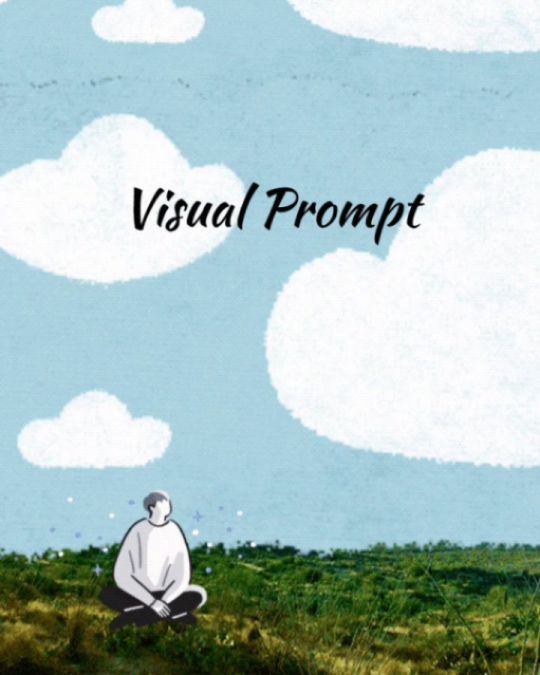
#justwrite #travelwithmestrangerfeatures #writingchallenge #24hrchallenge #promptart #writingprompt #artprompt #visualstoryteller #writerslift #poetsupport #promptchallenge #buddingpoet #buddingwriter #poetsupportingpoets #writingstreak #creativewriting #artistsupportingartist #artinspiration #storyinspiration #writinginspiration #storyprompts #writersliftingwriters #writersandpoets #poetsandartists #poetsandwriters #quoteswriter #poetsandwritersfeature #featuringpage #promptlist #storyidea (at Creative Writing) https://www.instagram.com/p/CpQ7jRVhJ_1/?igshid=NGJjMDIxMWI=
#justwrite#travelwithmestrangerfeatures#writingchallenge#24hrchallenge#promptart#writingprompt#artprompt#visualstoryteller#writerslift#poetsupport#promptchallenge#buddingpoet#buddingwriter#poetsupportingpoets#writingstreak#creativewriting#artistsupportingartist#artinspiration#storyinspiration#writinginspiration#storyprompts#writersliftingwriters#writersandpoets#poetsandartists#poetsandwriters#quoteswriter#poetsandwritersfeature#featuringpage#promptlist#storyidea
0 notes
Text
Bill Gates tell an inspirational story
#quotes#quote#bill_gates#bill_gates_story#bill_gates_inspirational_story#bill_gates_tell_story#bill_gates_tell_inspirational_story#inspirational_story#inspirational_quote#inspiring_story#inspiring_speech#inspirational_speech#inspiring_quote#inspiring#inspirational#story#storytelling
0 notes
Text
This is my life now
Silly little me is thinking about the silly little pirates doing their silly little things at any time of the day
79 notes
·
View notes
Photo

Whenever I am wandering around a city there is always a movie playing in my head. Who lives here? What does their life look like? What is their story? This is especially true when the place isn't pristine. I love the rawness of this street. . . . . . #styleontheside #carolinetopperman #seetheworldthroughmyeyes #storyinspiration #storytellers #travelphotography📷 #travelphotoblog #tellyourstory #torontowriter #teampixel #torontobloggers #humanstories #stjohn #newbrunswick #googlelocalguides #pixel5 #letsguide #writingprompt #writingmystory #writingcommunityofinstagram #writerlife #writerswrite #canadianbloggers #city_features #canadatravel #canadianwriter #cbclife #creativenonfiction #canada🍁 #canlit (at Saint John, New Brunswick) https://www.instagram.com/p/Ch18rZVLb2S/?igshid=NGJjMDIxMWI=
#styleontheside#carolinetopperman#seetheworldthroughmyeyes#storyinspiration#storytellers#travelphotography📷#travelphotoblog#tellyourstory#torontowriter#teampixel#torontobloggers#humanstories#stjohn#newbrunswick#googlelocalguides#pixel5#letsguide#writingprompt#writingmystory#writingcommunityofinstagram#writerlife#writerswrite#canadianbloggers#city_features#canadatravel#canadianwriter#cbclife#creativenonfiction#canada🍁#canlit
4 notes
·
View notes
Text
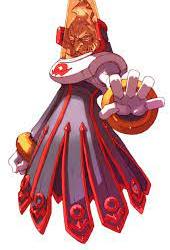
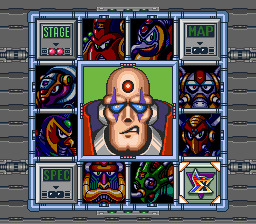

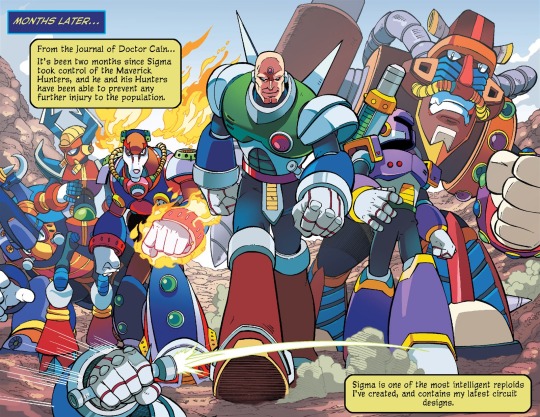
Another thing, the lore of the x series is kinda sick. I know it's a poser thing to do but as a kid I went through all the wikipedia articles bc I didn't have the consoles to play the games, and the story is kind of fascinating.
X is the first robot with free will, some scientist in the future finds him and makes a whole bunch of robots based on X also with free will. Wily made a robot based on protoman and infected it with an evil virus. Sigma finds the robot (zero) and gets infected, and the rest of the series all the bad robots are sick and that's why they're evil.
It's kind of sad. Like good people (robots) being turned evil against their will - imagine catching a cold and losing your personality. Great story inspiration. philosophical too. is it their fault/ are they evil if they can't willingly control it?
And in a way it kind of still makes Wily the main badguy for making the virus but without making him the focus.
Then the zero franchise there's an imposter x that everyone thinks is the real x so they blindly follow a dictator who is evil. that sucks too imagine having an evil clone that everyone thinks is the real you and having your reputation tarnished. but it makes it cool for zero being the only surviving hero to fight for justice.
oh the guy at the top's from the zero franchise. i just love the zero franchise character designs.
I want to get into the metal gear franchise too LOL.
being the inferior clone but still winning based on determination. don't remember the context for that but it gives me chills.
2 notes
·
View notes
Photo

Love this entrance to #WarwickCastle I always think it looks like a fantasy land. #warwick #homecounty ##warwickfolkfestival #storyinspirations #storyideas #authorsofinstagram https://www.instagram.com/p/B0bRj3_ngMK/?igshid=1mguaydav3n4y
#warwickcastle#warwick#homecounty#warwickfolkfestival#storyinspirations#storyideas#authorsofinstagram
0 notes
Text
Prompt
While cleaning out the basement, you discover an odd-looking chest. After hours of trying to pry it open or find a key, you finally manage to get it open. But once it is open, you’re shocked to discover that it’s seemingly bottomless and who knows what is inside.
-Mod Katie @Lovelykat23 on Instagram
#writing#writer#write#writers#creative writing#creative writing help#creative writing prompts#writing prompt#writing prompts#prompt#prompts#idea#ideas#story#stories#storyidea#storyideas#storyinspo#storyinspiration#book#book idea#book inspo#book ideas#book prompt#book prompts#chest#magic
41 notes
·
View notes
Photo

So I saw this on Pinterest, and I'm POSITIVE these two are my muses 😂 Starting work on my Hermes makeup test can't wait to see how it turns out! #sundayfunday #authorsophiamenesini #naughtymuses #storyinspiration #pinterestart #badomens #indieauthor #cosplaynewbie #hermes #greekmythology #theveiledduchessseries #moderngreekgods #keepingbusy (at Martinez, California) https://www.instagram.com/p/B-C8MXxg2Zd/?igshid=hga66iw4udjo
#sundayfunday#authorsophiamenesini#naughtymuses#storyinspiration#pinterestart#badomens#indieauthor#cosplaynewbie#hermes#greekmythology#theveiledduchessseries#moderngreekgods#keepingbusy
1 note
·
View note
Text
There is a lot I haven't seen yet, but Lovebirds just shot to the top of the list.
Another message from the CEO of the Totally Normal for Rhys Darby Tumblr Association

We are now accepting nominations for our Board of Directors. To qualify, you must be absolutely Totally Normal for Rhys Darby, and reblog this post with one unique Darby fact, Darby photo/video, anecdote of a Darby sighting, or other relevant experience. See examples below:


If accepted, be on the lookout for a complementary Rhys Darby in your inbox.
Current Board Members include:
CEO and Director of Cryptid Studies: @mxmollusca Director of Swearwolves: @appleteeth Director of Indoctrination: @vonlipwig Director of Mouth Noises: @ramsaybaggins Director of Dynamic Media: @fandomsmeantheworldtome Director of Brainrot Contagion Control: @thatfuchsiafloralrobe Director of Getting Weird: @braezenn
The submission window closes: never. There is no end.
Time is a flat circle.
The world is balanced on the shapely shoulders of Rhys Darby.
And upon what is he balanced? Another Rhys Darby.
It's Darbys all the way down, baby.
202 notes
·
View notes
Photo

#Repost with @Repostlyapp @ironside_sheets Something floatin' in my head. #writing #scene #writer #writerscommunity #writersofinsta #writinginspiration #storyinspiration #storytelling https://www.instagram.com/aun_fire/p/BwmsIPshLZn/?utm_source=ig_tumblr_share&igshid=vc69i6ymti41
#repost#writing#scene#writer#writerscommunity#writersofinsta#writinginspiration#storyinspiration#storytelling
1 note
·
View note
Text

“When you are not fed love on a silver spoon, you learn to lick it off knives.” -Lauren Eden
#stories#inspiration#write#lesbianromance#lesbianlove#motivationmonday#storyinspiration#characterinspiration#lesbian#lesbianpassion
1 note
·
View note